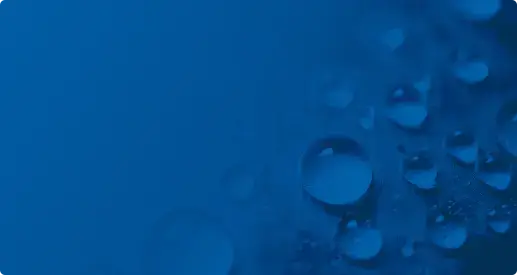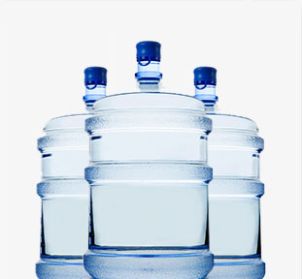
How To Remove Chlorine From Water

For many people, the smell of chlorine brings back fond memories of summer afternoons spent in the pool. If you notice that same scent in your drinking water, however, you might feel more concerned than nostalgic.
Here’s everything you need to know about chlorine: what it is, how it gets into your water supply and what the dechlorination process actually looks like.
What Is Chlorine?
Although you may associate chlorine with cleaning, there’s more to know about this chemical element. Let’s take a closer look:
Chlorine Basics
Various forms of chlorine are naturally present in seawater oceans and the Earth’s crust — but we didn’t always know that. In fact, this element was only officially recognized in 1810. It went on to get its name from the Greek word chloros, which means “yellowish-green.”
Like many elements, chlorine can exist in all three states of matter:
- Solid when found in natural compounds like crystalline rock salt
- Liquid when cooled
- Gas at room temperature

While chlorine is often found as a solid compound in nature, you’re probably most familiar with it in its liquid form as a cleaning agent.
Chlorine vs. Chloramine
Although the words “chlorine” and “chloramine” sound similar, they aren’t interchangeable. Chloramine is actually the name for a group of chemical compounds, all of which contain chlorine. Put simply, chlorine contains no other elements, but chloramine includes other substances like ammonia.
Uses for Chlorine
Pools aren’t the only places you’re likely to find chlorine. Here are a few more items produced using this element:
- Solvents
- Fire extinguishers
- Dyes
- Synthetic rubber
- Household cleaning products
- Seat cushions
- Brake fluid
There’s one more use for chlorine that you may be familiar with: warfare. While chlorine gas was used by German forces in WWI, the good news is that modern exposures are primarily accidental.
Don’t worry, though — the pool cleaner that brings back such fond memories isn’t the same form of chlorine. When it comes to this chemical element, there’s a big difference between its liquid and gaseous states. However, chlorine’s history still acts as a good reminder to use it carefully — especially since mixing chlorine and any acid can create this harmful gas in your home.
How Chlorine Gets Into Your Water Supply
Now that you know what chlorine is, it’s time to find out why you might be smelling it when you turn on the tap.
Chlorine as a Cleaning Agent
Chlorine has a long history as a cleaning agent. In fact, it’s been used in the form of monochloramine to clean U.S. and Canadian drinking water for more than 90 years.
Monochloramine is one of three chloramine types. It’s generally the compound of choice because it can be added to the water supply at levels that kill bacteria without significantly impacting human health. Sometimes it’s used instead of chlorine because pure chlorine can create disinfection byproducts when interacting with substances that may be in the water supply.
That means your chlorinated tap water might technically be “monochloramined” tap water. Either way, it can be a good thing. According to the Guidelines for Canadian Drinking Water, this type of disinfection has virtually eliminated waterborne diseases.
This is all possible because chlorine or chloramine have been added to the public water supply. However, this is a process performed by water companies or other responsible parties, so it’s specific to municipal water. That means private well water users won’t have these elements in their water unless manually added.
Safe Levels of Chlorine
Chlorine water is safe to drink, cook, clean and bathe with. You can even give this water to most plants and pets. However, some aquatic animals — including fish, reptiles and amphibians — can be harmed by chlorine and chloramine, as these elements can damage their gills. Be careful when filling a fish tank or water bowl for these creatures.
It’s important to note that chlorinated water can be more of a concern for kidney dialysis patients. That’s because dialysis takes water directly into the bloodstream, and chlorine and chloramine have more significant effects when interacting with blood directly.
Signs of Chlorine in Water
Because most tap water has some amount of chlorine, the real question is how you can tell when there’s too much of this element in your water supply. Look for these telltale signs:
Health Effects of Chlorine
As long as you aren’t an aquatic animal, chlorine and chloramine are safe in certain amounts, especially the 1.0 to 4.0 mg/L usually found in drinking water. However, long-term exposure or particularly high levels of these elements can have harmful effects called chlorine poisoning.
Symptoms of chlorine poisoning can include:
- Throat pain and swelling
- Stomach pain
- Vomiting
- Blurry vision
Keep in mind that most cases of chlorine poisoning have nothing to do with tap water. It’s far more common for this issue to occur after contact with household cleaners — for example, if children ingest chlorine tablets used in swimming pools.
Aesthetic Effects of Chlorine
Aesthetic elements of your drinking water include taste, smell and odor. If there’s too much chlorine in the water supply, you may notice a bleach-like odor or an odd taste, but your water should still be relatively clear.
Other Effects of Chlorine
Chlorine and chloramine are chemicals, which means they can occasionally change the properties of your water so it interacts differently with your plumbing. Water treated with chloramine could affect certain pipes; as a result, metals like lead and copper could leech into your water supply, causing separate health and aesthetic issues.
Should You Dechlorinate Water?
When you hear there might be chlorine in your water system, it’s natural to have a lot of questions. You may even find yourself wondering whether it’s safe to remove chlorine and chloramine, since these substances are supposed to be cleaning your water supply. The good news is that it’s safe to eliminate or reduce chlorine from water as long as you use the proper methods.
To understand why this is, it might help to imagine your water traveling from its original source to your tap. One of the first steps in this process is to get a sort of shield in the form of chlorine or chloramine. This protects the water as it moves through various pipes and water systems. Once the water arrives safely at your faucet, that shield can be removed.
Removing Chlorine From Your Water
Once you know all there is to know about chlorinated water, there’s still one challenge left: how to remove chlorine from water. Here are a few do’s and don’ts when it comes to dechlorination:
Boiling
Boiling water for about 15 minutes will release the chlorine. This process works, but it’s not a fast or efficient way to handle all your drinking water — especially since water would need to cool before going in your glass or your pet’s bowl.
Distilling
Distilling involves boiling water into vapor and then capturing and condensing that vapor back into a liquid. While certain distillation systems may be effective at reducing or eliminating the presence of chlorine, there are two drawbacks that make this method inefficient:
- Chlorine has a lower boiling point than water.
- Distillation, when effective, takes even longer than the boiling method discussed above.
Cooling
You can also remove chlorine by leaving an open container of tap water in your fridge. The cooling process can take 24 hours or more, depending on the amount of water. During this time, the chlorine will evaporate.
Sitting
Another chlorine removal technique is to leave your drinking water sitting at room temperature. While this process can also take 24 hours or more, it can sometimes be faster than putting your water in the fridge.
Using Water Filtration Systems
The best way to reduce the presence of chlorine is to find a high-quality water filter for your home. Look for a water filter that’s been tested and certified by the Water Quality Association against NSF/ANSI Standard 372, CSA B483.1, and NSF/ANSI Standard 42 for the effective reduction of chlorine taste and odor.
Typically, water treatment systems for chlorine include activated carbon filters. While undersink filtration options such as reverse osmosis systems can reduce chlorine in your drinking water, the best solution is usually a whole-house filtration system, which means you’ll smell less chlorine when bathing, washing clothes, cooking and drinking.
The Journey Toward Cleaner Water
Although you can often smell or taste the effects of too much chlorine in your water supply, you don’t want to spend time wondering whether there’s really a problem. Instead, it’s best to take the first step toward cleaner water by having a water test performed.
A professional, in-home water test can provide important information about your water quality, including whether certain issues can be attributed to high levels of chlorine or chloramine. Along the way, you’ll learn about other potential issues like iron, water hardness and more. If you’re concerned that chloramine may be causing your plumbing system to leach metals into your water supply, you can also have a laboratory test performed, which will provide information about problems like lead and copper.
To get started, schedule your free water test today.
Find A Location Near Me

Schedule Your Free
In-Home Water Test
Get better water in your home by scheduling an appointment with your local Culligan Water Expert.
Discover More
See All Articles

PFAS Regulations in the U.S.
Learn about PFAS and the latest EPA guidelines for better water quality.
15 min read

Explore

Explore
Our Products

Water Softeners
With any of our soft water systems, get more out of your water-using appliances while spending less on energy and detergent.
View Products

Water Delivery
There’s never been a better time to enjoy the convenience of scheduled bottled water deliveries from the Culligan® Water Experts
View Products

Water Filtration Systems
Culligan's water filtration systems have improved water quality for thousands of families worldwide.
View Products
